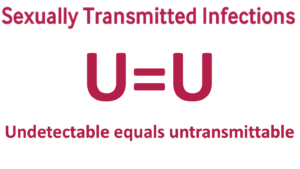We bring you a 3-part series of podcasts dedicated to the World AIDS Day 2020 where we address the topic of U=U – an undetectable viral load equals untransmittable infection. We ask the question: Does the way we choose to inform people with HIV about U=U improve their quality life? What other research is needed about how we communicate the U=U message?
The PARTNER-1 and PARTNER-2 studies provided some of the key evidence that people with HIV who receive effective antiretroviral therapy and have a suppressed viral load do not transmit the virus even if they choose to engage in condomless sexual intercourse. But has this ground-breaking discovery effectively reached people living with HIV around the globe? How do they find out about the U=U message? Does this information improve their wellbeing? Is there an opportunity for health care providers to be more effective when they communicate research outcome to their patients?
A recent multi-centre study by Chinyere Okoli and co-authors titled Undetectable equal untransmittable (U=U): awareness and associations with health outcomes among people living with HIV in 25 countries examines these relevant questions.
We use the podcast series to delve into the greater meaning of U=U with Fabiola Martin, Chinyere Okoli, Brent Allan, and Paul Volberding, going beyond the mere concept of suppressing viral load with antiretroviral therapy. Join us!
Episode 1: “An introduction to Undetectable equal untransmittable (U=U): awareness and associations with health outcomes among people living with HIV in 25 countries”
Interview with Chinyere Okoli
Highlights:
- A new target needs to follow the UNAIDS 90-90-90 diagnosis-treatment-suppression targets: 90% of people living with HIV who have an undetectable viral load should enjoy a good quality of health and life.
- Discussing U=U with a healthcare provider is beneficial: the discussion brings about a significant association between HIV virological suppression and optimal mental, physical and sexual health.
- How we talk about U=U matters: there is a need for further research into how the conversations around U=U are conducted, especially with young people .
Episode 2: “Living Positive”
Interview with Brent Allan
Highlights:
- U=U has the power to change negative perspectives on HIV infection and empowers people living with HIV to become “…ambassadors for health safety and security”.
- HIV status discordant couples report to be less afraid of intimacy with their partners; knowing of the U=U message decreases stress and increases quality of life.
- All people with HIV need to have access to the U=U message, including women and heterosexual couples, and those who would like to become pregnant.
Episode 3: “Future research”
Interview with Paul Volberding
Highlights:
- The study by Okoli et al. provides us with a global perspective on how U=U is communicated with with HIV.
- The U=U message may not be getting through to some populations including heterosexual couples and certain regions of the world
- There is a need for a clear and global consensus on how an undetectable viral load is determined.
Remember to subscribe to STI podcasts on Apple podcasts, Google podcasts, Stitcher, and Spotify!
Additional Resources:
Beyond viral suppression of HIV – the new quality of life frontier
Implementing U=U in clinical practice: results of a British HIV association members survey
Criminalisation of HIV transmission in the era of U=U
Person-centred care and HIV: challenges and solutions
